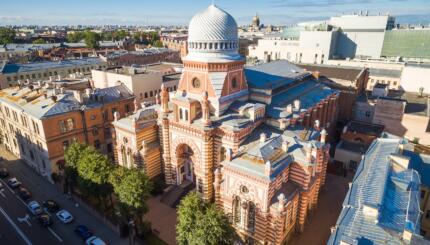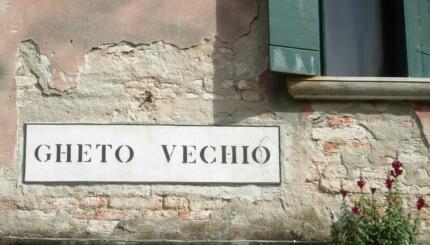Reprinted with permission from A History of Jews in America, published by Vintage Books.
Although the religious life of observant Jews did not show many signs of vitality on the Lower East Side before 1910, the ghetto’s 600 religious congregations testify to the "authenticity of the Jewish religious imperative to worship," as well as to care for one’s own. Many of the shuls on the Lower East Side had developed around landslayt, groups of Jews from the same Eastern European towns, and these shuls often operated as mutual-aid societies. Most often, landslayt groups went on to form officially registered landsmanshaftn [groups of Jews from the same town]. Some were independent; most were connected to synagogues, unions, extended family circles, or fraternal orders.
As early as 1892 there were 87 Eastern European landsmanshaftn, and by 1910 there were more than 2,000, representing over 100 European cities and towns and embracing virtually every Jewish family in New York City. All landsmanshaftn maintained at least a link to the old-country location, particularly in times of crisis, when the shtetlekh [towns] from which they sprang were in need of material relief. All maintained a continuation of important communal services, such as burial arrangements and poor relief, as well as a context for a shared expression of nostalgia.
Reconciling Identities
Equally important, the landsmanshaft was a context for reconciling American and Eastern European identities. It served as a sanctuary from the strains of acculturation, ambition, and even ideology. And it gave the immigrants a breathing space, a place to be themselves, a place to continue the tradition of tzedakah [charity] and self-help, and also a place to play a game of pinochle. At the same time, it resembled an American fraternal order, with rites and constitutions, its camaraderie, and its opportunity for "doing a little business."

Help us keep Jewish knowledge accessible to millions of people around the world.
Your donation to My Jewish Learning fuels endless journeys of Jewish discovery. With your help, My Jewish Learning can continue to provide nonstop opportunities for learning, connection and growth.
As early as 1901, some landsmanshaftn changed their names. The Independent Young Men of Poniewiez became the Young Men’s Association of Manhattan, because they had "no desire to be identified with Russia, or any town in Russia." Most immigrants, however, even after many years in America, still thought of themselves in terms of reference points in the old countries, and their landsmanshaftn kept their original names. They Americanized in other ways. The Kalushiner Society, for example, reported that it had "long given up the idea of being isolated, divided from general Jewish life in America…. Its hand is extended to the many other Jewish organizations in America." Other landsmanshaftn Americanized by enlarging their scope and changing their names. In 1911 the Ekaterinoslow Ladies Charity Society became the Ladies Charity Society of New York in order "to enlarge the field of its charity… to include not only those worthy of charity who originally came from the town of Ekaterinoslow, but to all wh~ may need it in the city of New York."
The world of the landsmanshaft very much reflected the broader themes of American Jewish life and clearly was not a mere nostalgic "brotherhood of memory." The landsmanshaft was a vehicle for mutual aid, philanthropy, health services, insurance, credit, and relaxation; and it was a pit stop of sorts, at which immigrants could refuel and then go on to confront the new society around them.


